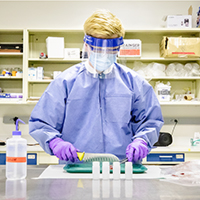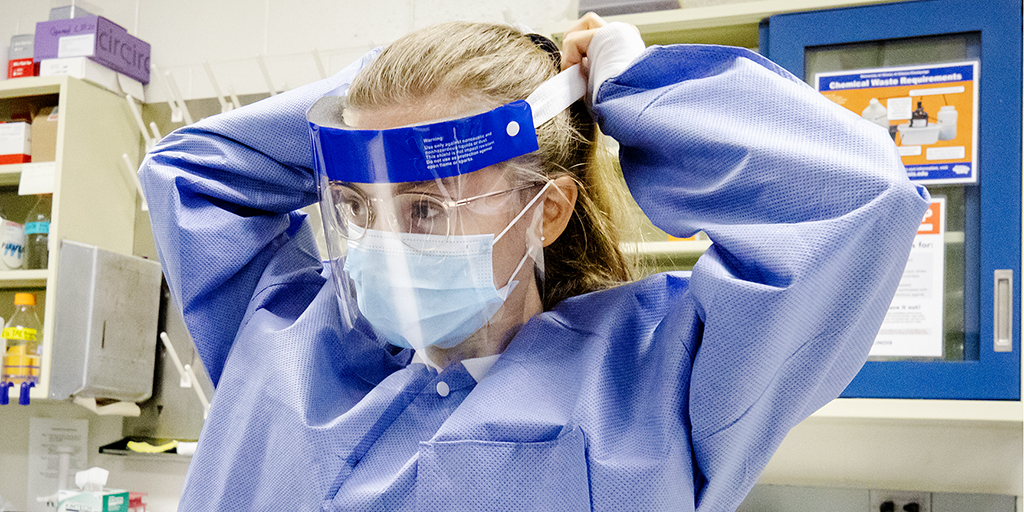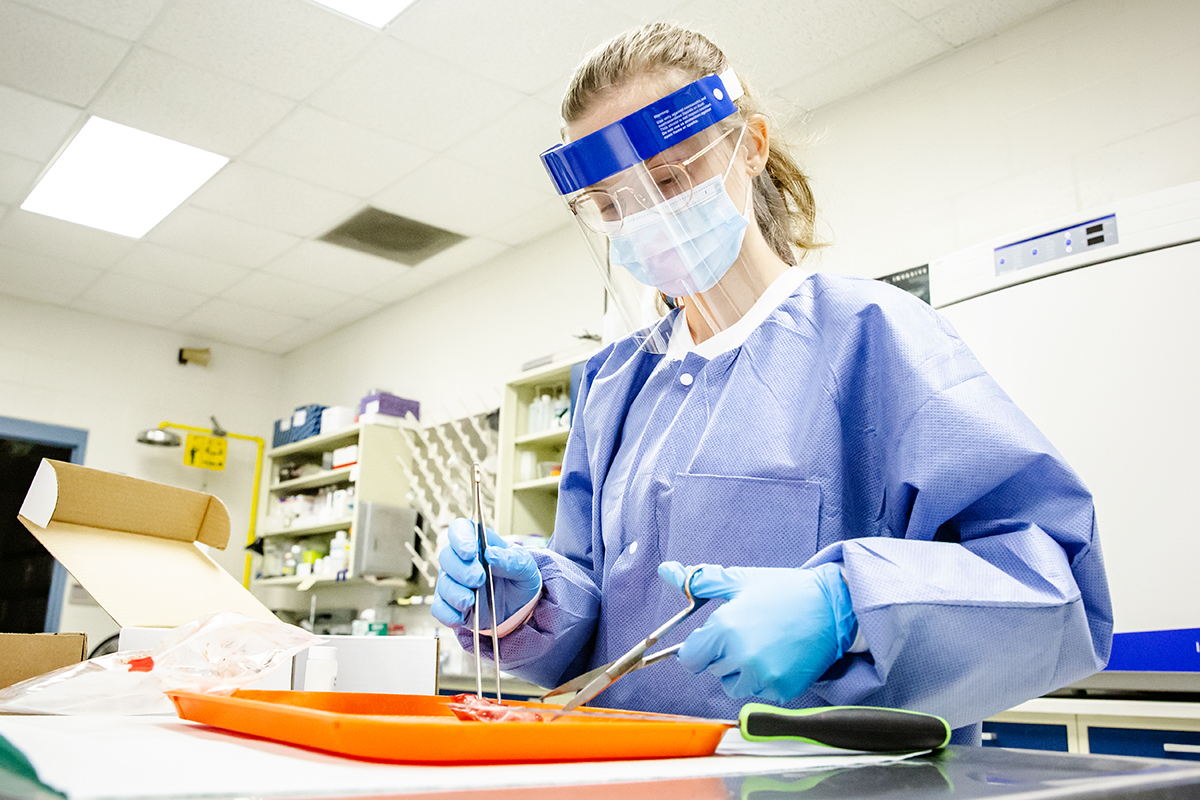
Lupas processes a tissue sample for analysis.
Photo by L. Brian Stauffer
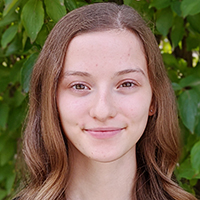
Working in an epidemiology laboratory and the COVID-19 pandemic have taught undergraduate student Rachel Lupas about managing infectious disease.
Photo courtesy Rachel Lupas
CHAMPAIGN, Ill. – My mask keeps my face warm as I make my way to the Wildlife Veterinary Epidemiology Laboratory this cold November morning. Campus is starting to empty out as students leave for the holidays. However, with cases of COVID-19 increasing again, many students may not return until next semester and many others will be isolating in their homes. Back in March, I worked remotely when the pandemic shut campus down, and since early summer, I have been working in person again. After the holidays pass, I hope we won't have to give up our time in the laboratory to do virtual work alone.
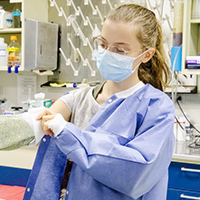
Lupas prepares for a day in the Wildlife Veterinary Epidemiology Laboratory.
Photo by L. Brian Stauffer
As I reach the door to our building, I am greeted with a mask and disinfection station. I hear the familiar hum of fridges and all the lights are off, as I am the first person to come in for the day. I see stacks of boxes in the back room that I know are full of samples we have been working on since returning to the lab. I'm excited to be doing hands-on work, which includes processing deer tissue samples and fetuses.
Our lab primarily studies wildlife diseases such as chronic wasting disease, a prion disease that affects deer, along with tick-borne diseases such as Lyme disease in deer and small-to-medium-sized mammals.
We do not claim to be experts on COVID-19 or other infectious diseases in humans. But our training helps us better understand this global pandemic. Some of the diseases we study in wildlife, including leptospirosis and toxoplasmosis, are zoonotic, meaning that they can also affect humans. The novel coronavirus is believed to have originated in wildlife before it infected humans.
Work conducted in a "biosafety level 2" laboratory like ours entails handling agents that pose a moderate health hazard to humans. As my job requires, I was trained to properly handle and dispose of such biohazardous materials. Although transmission of chronic wasting disease from deer to humans is not known to occur, we follow biosafety level 2 protocols whenever we work with deer tissue.
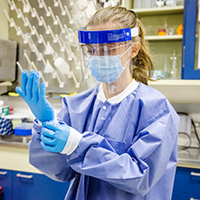
Cut-resistant gloves are required when processing wildlife tissue samples.
Photo by L. Brian Stauffer
In the wake of COVID-19, our laboratory enhanced its safety precautions. For example, I am working alone today for a few hours, but I must be supervised while cutting and processing tissue. This requires a Zoom session with a colleague – a very different process than in the pre-COVID-19 days, when several of us processed tissue together in the lab. Today, we have a personnel limit, and when it is reached, we must practice social distancing by working at different ends of the lab bench.
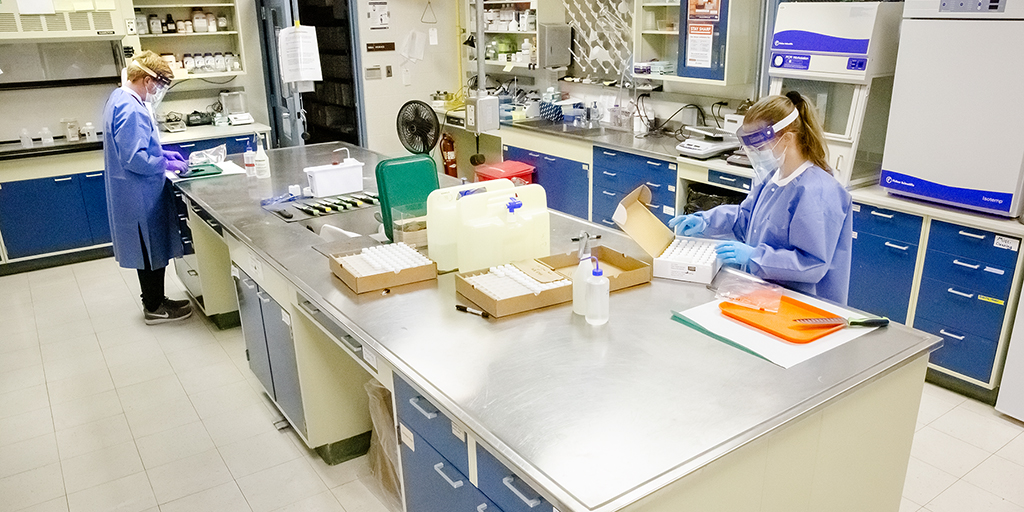
In addition to wearing protective gear, lab members must work at opposite ends of the laboratory bench.
Photo by L. Brian Stauffer
There are other signs of change. I see a note on the water fountain that says, "Water bottles only." The fan in the bathroom must now be left on to increase airflow. When sitting in the office during my break, I notice that the desks are now eight feet apart.
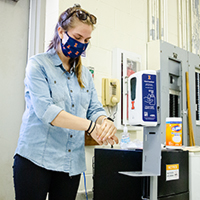
Kelsey Martin sanitizes her hands at the disinfection station upon entering the building.
Photo by L. Brian Stauffer
My training in this lab makes me more conscious of the proper ways to deal with infectious biological material, an invaluable benefit during COVID-19. In addition to handwashing protocols, I use gloves – as I always did – which actively reminds me to not touch my face or cross-contaminate surfaces or samples. I find that when I am in public, I'm constantly disinfecting my belongings.
I miss not having to worry about getting sick. I miss going to football games, concerts and movie theaters. But I also realize that the last few months have been essential to my education, teaching me so much about infectious diseases and their transmission. And for that I am grateful.
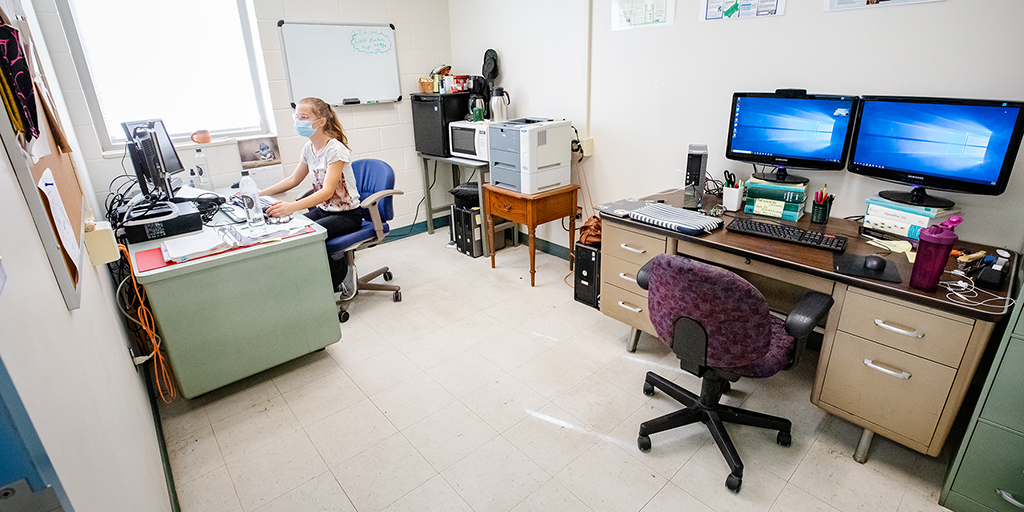
Lupas enters data in the laboratory computer database; office desks are now eight feet or more apart.
Photo by L. Brian Stauffer

